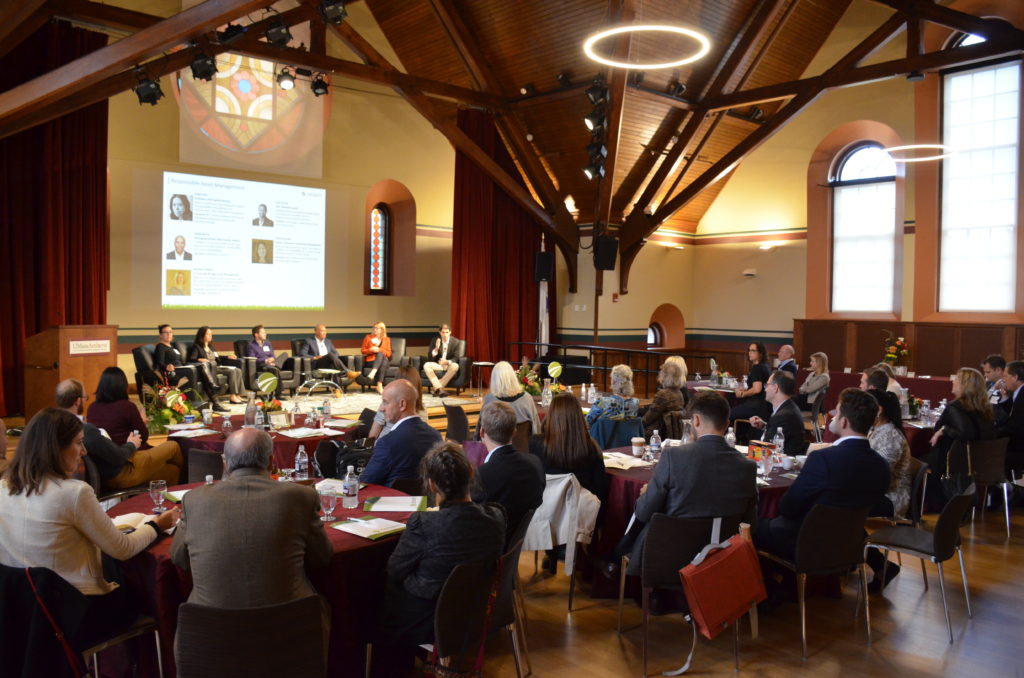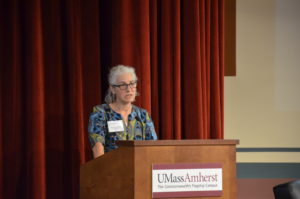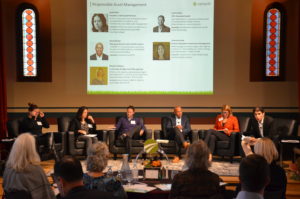Thursday, December 19th, 2019
This piece initially appeared on ImpactAlpha in December of 2019
It has been 18 months since Diane Isenberg, Ceniarth’s founder, announced our intention to focus our capital on impact-first investments. These are transactions that maximize the impact that we can have in underserved communities, and require more modest return expectations.
We are crystal clear about where we fall on the continuum of investment capital. The “Beyond Tradeoffs” series of podcasts, produced by ImpactAlpha in partnership with Omidyar Network, laid out how the impact investing sector is moving past the circular debates that used to produce industry gridlock.
Some investors are pursuing purely market-rate returns, and demonstrating under certain circumstances it is possible to achieve risk-adjusted, market-rate returns with substantial social impact, as the series acknowledges.
Others, Omidyar Network suggests, “identify types of impact that are not conducive to market-rate returns, underscoring the importance of a rigorous approach to making decisions about when and how to deploy subcommercial capital.
We have embraced this subcommercial end of the spectrum and have set out to infuse an impact-first ethic across the entirety of our Ceniarth portfolio, reshaping how both our private foundation and unrestricted family office assets are deployed. We have committed nearly $100 million in those 18 months, all with an impact-first lens. In 2019 alone, we made $55 million in new commitments across 30 transactions. Yeah, we’ve been busy.
Ceniarth’s team is not the only one that have been busy in 2019 embracing the thorny challenges of serving the fringes of the capital continuum that are unappealing to those with conventional financial expectations. The MacArthur Foundation dedicated $150 million in support to the Catalytic Capital Consortium earlier in the year. Major development finance institutions led by the likes of OPIC, KfW, FMO, and CDC made new commitments to blended finance vehicles. Significant, impact-first institutional capital was mobilized in 2019.
Multiplying our Impact
While we have the privilege and responsibility of stewarding a significant amount of capital, it is a tiny amount in comparison to the needs that we are hoping to address. For this reason, it is critical that we use our dollars to catalyze and support others.
The runaway winner of our “leverage unicorn” of the year was Global Partnerships’ Impact-First Development Fund. Our $3 million subordinate debt commitment was part of a $5 million tranche that unlocked $50 million of capital from OPIC. The 10X leverage on this deal allowed us to mobilize, in one transaction, nearly the entire amount of capital we deployed ourselves in 2019.
Large capital deployments from development institutions made possible a number of our other significant commitments this year. Our largest single transaction was a $7.5 million commitment to Blue Orchard’s new InsuResilience Fund, a vehicle supporting microfinance institutions that incorporate climate insurance products into their loan offerings. That was anchored by a $32 million first loss commitment from German development bank KfW. We joined alongside OPIC’s $25 million commitment to emerging market solar energy financier SunFunder to make a $5 million commitment of our own to the Solar Energy Transformation Fund.
Similarly, we joined Dutch development investor FMO and FinDev Canada in making a $2 million commitment to EcoEnterprises Fund III, a manager focused on longer-term, mezzanine debt to agricultural and conservation enterprises in Latin America. Finally, we were able to use a $250,000 equity commitment, in the form of a program-related investment, to Cross Boundary Energy’s new Mini-Grid Finance Facility. Thatenabled mezzanine debt from the Rockefeller Foundation and project-level debt from the UK government-backed Renewable Energy Performance Platform (REPP).
We are encouraged by the appetite that many of these development institutions have shown to lean into deeper impact.
Catalytic can mean reasonable
While many have come to associate the concept of catalytic capital with blended finance or creatively structured, multi-tranche vehicles, sometimes the most catalytic thing that an impact investor can do is to offer reasonable, low-cost capital where it is most needed. A number of our 2019 commitments were made to community development finance institutions, or CDFIs, in the United States working in areas of persistent poverty and deep need.
We provided $2 million in 2% debt to FAHE, an Appalachia-based CDFI focused on lending for a variety of community development needs from housing to facilities. We made low-cost capital available to two CDFIs working specifically on resident-owned mobile home communities. Innovative financing from the New Hampshire Community Loan Fund (NHCLF) and ROC-USA is allowing mobile home residents to avoid park take-overs by aggressive financial investors that lead to steep increases in rent (see John Oliver explain the problem in comedic detail here!). We provided $2 million in 2% debt to NHCLF for use in New Hampshire and $3 million in 3% debt to ROC-USA for parks across the country.
Outside of CDFIs, we used our financial “reasonableness” to extend $5 million in 3% debt to MCE Social Capital, a non-profit impact investment manager focused on lending to high-impact MFIs and SMEs in emerging markets, as well as providing $2.5 million in 2.5% sub-debt to trade finance lender Root Capital. This sub-debt position allows Root to continue raising senior debt to scale their activities. In addition, we committed $2.5 million to emerging market private credit specialist AlphaMundi, an investment that we expect to generate between 3-5% in annualized returns.
In a transaction that we did not include in our annual tally of $ committed, as its scale would have skewed the headline, we transitioned $15 million in fixed income holdings to a specialized managed account mandate with Community Capital Management. We will be focusing these bond holdings solely on offerings that are located in persistent poverty zip codes in the United States.
Fintech inclusion
Emerging market fintech has become a hot category for all investors, whether impact-focused or not. The potential to enable a leapfrog change in financial services infrastructure has drawn significant interest and venture capital over the past five years. And while technology advancements such as mobile money play a key role in facilitating the rural business models that we fund, we have been more an observer of this market than an active participant.
This changed in 2019 as we made a number of investments in the category. We made a$2 million commitment to Quona, an impact-oriented venture firm focused on investing in fintech for inclusion globally. As their first, pilot lender, we have watched happily as Lendable, a tech-enabled lending platform for non-bank financial enterprises, has grown their capital under management. As they have evolved their own model to raise structured funds, we have extended $2 million in corporate debt to support their expansion, as well as specific transactions that do not fit their main fund criteria. Finally, we have extended $2 million in debt to 4G Capital, a provider of short-duration working capital loans to micro and small enterprises. The platform primarily serves traders and shopkeepers in rural areas, 80% of which are women.
New approaches to income-generation
Our focus on rural livelihoods has often meant using our limited PRI (program related investment) dollars to focus on agricultural initiatives, with a particular emphasis on inputs and direct assistance for smallholders. We have outstanding loans, a number of which we renewed this year, to One Acre Fund, MyAgro, Good Nature Agro, Apollo Agriculture, iProcure, and others engaged in this type of work. In 2019, we began to expand our scope of pilot lending however to include a range of interventions, both agricultural in nature, as well as those focused on other income-generating activities for rural individuals.
We completed a $1million PRI loan to Victory Farms, the largest fish farm in East Africa that cultivates tilapia in an operation on Lake Victoria in Kenya. The Victory Farms model not only provides local employment, but aims to engage small fishers in the area, as well as local fish traders, many of whom are women that are exploited by suppliers. We have extended $500,000 in PRI revolving credit to All Across Africa, a Rwanda-based business that employees local women weavers in the production of baskets, vases, and other craftwork. Our line of credit provides the business with cyclical working capital to fulfill a growing queue of purchase orders from major western retailers.
In the agricultural domain, we have continued to look for enterprises that are pursuing innovative models that could offer step-change improvements in income for individual farmers. We extended $285,000 in debt to Kheyti, an India-based enterprise that supports farmers with a “Greenhouse-in-a-box” solution that allows for the sustainable cultivation of high value vegetables.
In addition, we provided $300,000 in debt to WARC (West Africa Rice Company), an enterprise based in Sierra Leone that is attempting to leverage a large-scale, profitable farming operation to train managers that will eventually be able to support smallholder outgrower units. WARC is a more centralized and coordinated model than we have seen elsewhere and is one that we believe is worth keeping an eye on. Finally, we made a number of pilot loans to organizations working, in a variety of ways, to offer unique market access to smallholders. Get It Rwanda ($500,000 loan), FarmFresh ($450,000 loan), Moringa Connect ($250,000 loan), and East Africa Fruits ($225,000 loan) are all engaged in helping to increase farmer incomes through value added production.
In total, we made $7.1 million in new PRI commitments, not including renewals, in 2019. We currently have ~$15 million in outstanding PRI capital, the majority of which we expect to be able to recycle in the coming years.
Leading on impact measurement
Those of you who know Ceniarth know that we rarely invest equity in early-stage enterprises. For a variety of reasons, it is not our preference. We are even less likely to lead an equity round. In fact, 2019 marked the first time that we played a lead role in an equity financing as we supported the spin-out of Acumen’s Lean Data team into their own new independent business, 60 Decibels. Structured as a PRI, our $625,000 equity investment was matched by investment from Acumen, as well as support from other private investors.
As we pursue the deployment of greater amounts of impact-first capital, investment in more rigorous impact measurement is essential to ensuring that scarce subcommercial dollars are being used for optimal impact. We had engaged with Acumen’s Lean Data methodology as a client, funding a comparative study of seven of our agricultural investments. The quality and granularity of their data collection work convinced us to become an investor in the business itself as it is a platform that we hope will become a critical tool for the industry.



